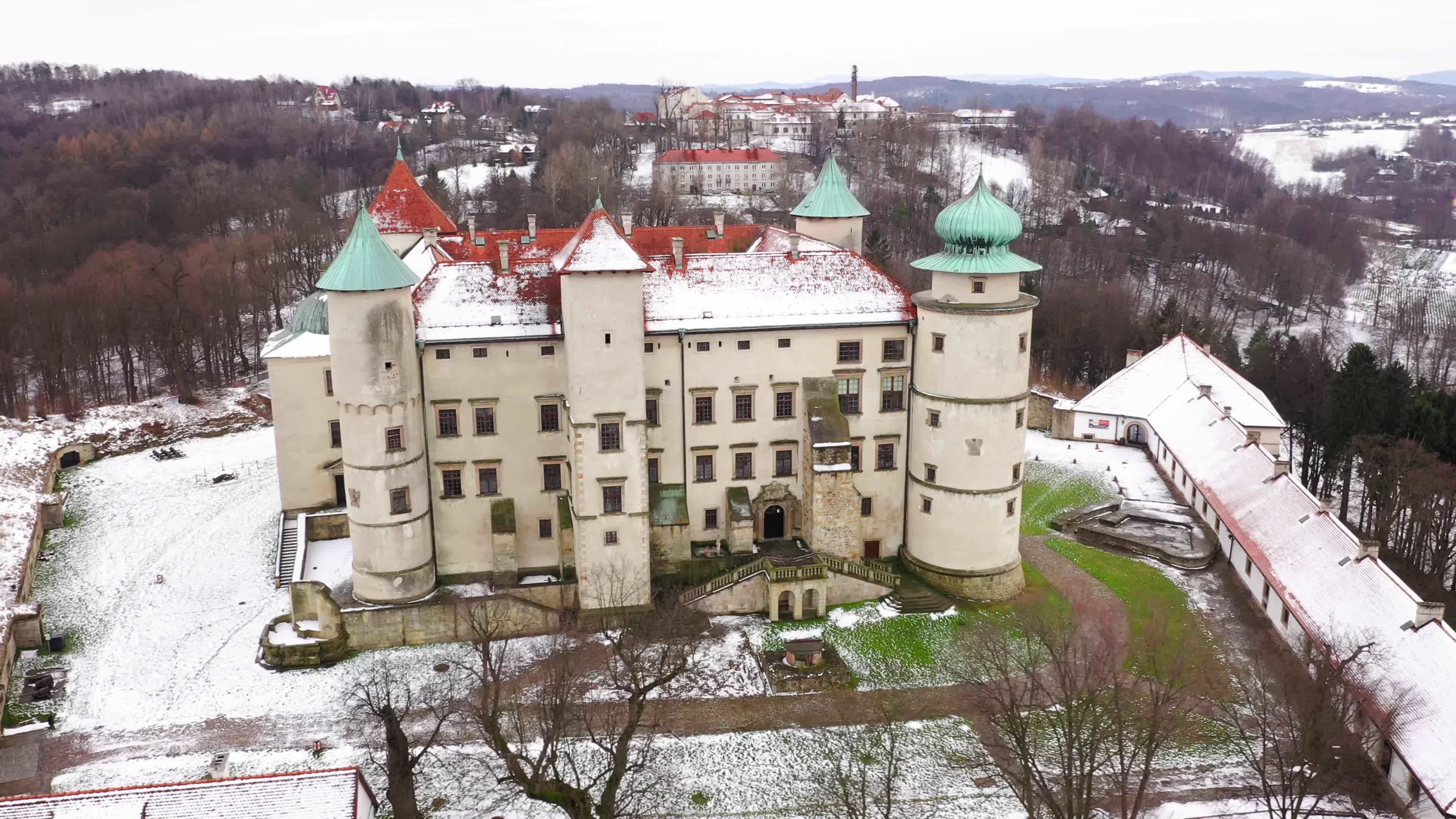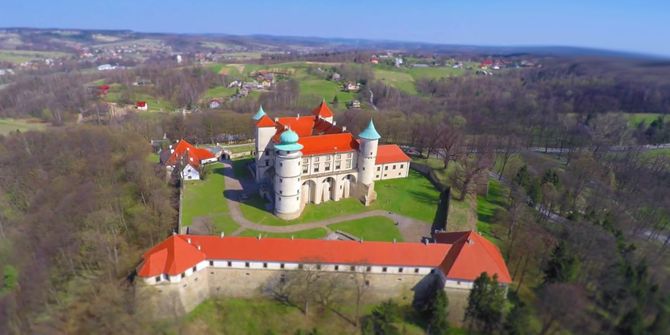Perched atop a hill overlooking the town of Nowy Wiśnicz in southern Poland, Wiśnicz Castle (Zamek w Wiśniczu) is a remarkable testament to the country’s medieval and Baroque architectural heritage. This imposing structure, with its thick walls and defensive towers, has stood as a silent witness to centuries of history, from royal intrigues to wartime struggles. Today, it remains one of Poland’s most well-preserved and historically significant castles.

Historical Overview
Wiśnicz Castle traces its origins back to the 14th century when it was initially built as a Gothic stronghold by Jan Kmita, a member of a prominent noble family. The strategic location of the castle made it an ideal defensive fortification against invaders. Over the centuries, it underwent numerous renovations and expansions, transforming from a medieval fortress into a grand Baroque residence.
The castle’s golden age came in the 17th century under the ownership of Stanisław Lubomirski, a powerful Polish magnate and military leader. Lubomirski, who played a key role in defending Poland during the wars against the Ottoman Empire and the Swedish invasion, turned Wiśnicz into a symbol of his wealth and influence. He commissioned the Italian architect Maciej Trapola to redesign the castle, giving it the Baroque grandeur that can still be seen today. The result was a stunning combination of military fortification and opulent residence, reflecting both Lubomirski’s strategic prowess and his refined taste.

Architectural Features
Wiśnicz Castle is a masterpiece of defensive architecture, with its thick walls, bastions, and corner towers designed to withstand sieges and attacks. The castle’s layout is based on a quadrilateral plan, with four massive towers at each corner providing a commanding view of the surrounding landscape. The walls are punctuated by narrow windows and loopholes, allowing defenders to protect the castle from within.
The Baroque elements of the castle are most evident in its interior and the residential quarters. The grand entrance gate, adorned with Lubomirski’s coat of arms, leads into a courtyard surrounded by arcaded galleries. Inside, the castle boasts richly decorated halls, elegant chambers, and a chapel, all reflecting the luxurious lifestyle of its former owners. The frescoes, stucco work, and carved wooden ceilings are some of the finest examples of Baroque art in Poland.
The castle’s park, designed in the French style, adds to its charm. The meticulously manicured gardens, with their geometric patterns and ornamental fountains, provide a serene contrast to the fortress’s austere exterior. The park also features a unique garden pavilion, known as the “Koryznówka,” which served as a summer retreat for the Lubomirski family.

Historical Significance
Wiśnicz Castle has played a pivotal role in Polish history, particularly during the turbulent times of the 17th century. During the Swedish invasion of Poland, known as “The Deluge,” the castle served as a stronghold for Polish forces. Despite being besieged by Swedish troops, it managed to withstand the assault, further solidifying its reputation as an impregnable fortress.
The castle’s fortunes declined in the 18th and 19th centuries, particularly after Poland was partitioned by its neighbors. The Lubomirski family lost their influence, and the castle gradually fell into disrepair. However, in the 20th century, efforts were made to restore the castle to its former glory, and today it stands as a symbol of Poland’s resilience and cultural heritage.

Modern-Day Attraction
In recent years, Wiśnicz Castle has become a popular tourist destination, attracting visitors with its rich history and stunning architecture. The castle is open to the public, and guided tours offer insights into its past, including the lives of the noble families who once lived there and the battles that shaped its history.
One of the highlights of a visit to Wiśnicz Castle is the armory, which displays a collection of historical weapons and armor, giving visitors a glimpse into the castle’s military past. The castle also hosts cultural events, including concerts, art exhibitions, and medieval reenactments, bringing history to life for modern audiences.
For those interested in more than just a day trip, the castle offers accommodation in its guest rooms, allowing visitors to experience the unique atmosphere of staying within the walls of a centuries-old fortress.

Conclusion
Wiśnicz Castle is a remarkable fusion of history, architecture, and natural beauty. Its towering walls and elegant interiors tell the story of Poland’s noble past, while its modern-day role as a cultural hub ensures that this story continues to be told to future generations. Whether you’re a history enthusiast, an architecture lover, or simply a traveler seeking to explore Poland‘s rich heritage, Wiśnicz Castle is a destination that should not be missed.

